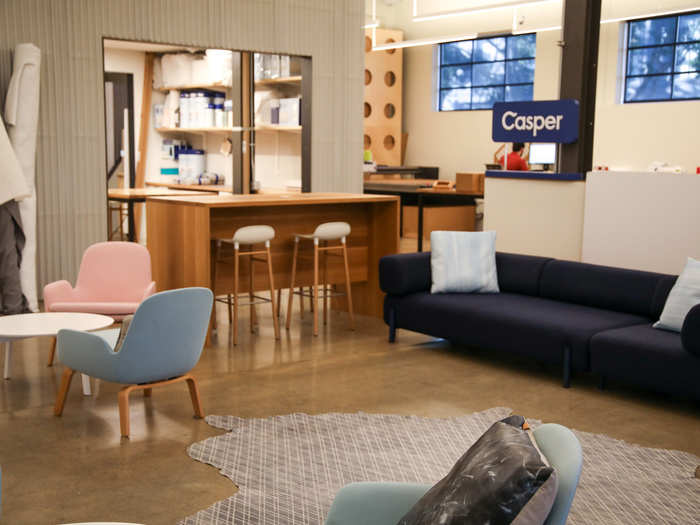

Casper outsources some of its ergonomics testing, but most of its prototyping and testing takes place in-house, right in the heart of San Francisco.
The company's business headquarters is in New York City.









Casper gathers data from human subjects hopping into its bed at the lab in San Francisco, but also by sending test kits home with employees, their friends and family, and a group of Casper testers.
The company can measure things like what the temperature is like under the sheets and whether a subject is too hot or too cold while they're sleeping.




The lower back is typically the hottest, sweatiest part of your body when you sleep, according to Chapin, so the machine has hot plates that leak a small amount of moisture over time. That way, Casper can see if its mattresses hold up for hot sleepers.




 A centenarian who starts her day with gentle exercise and loves walks shares 5 longevity tips, including staying single
A centenarian who starts her day with gentle exercise and loves walks shares 5 longevity tips, including staying single  A couple accidentally shipped their cat in an Amazon return package. It arrived safely 6 days later, hundreds of miles away.
A couple accidentally shipped their cat in an Amazon return package. It arrived safely 6 days later, hundreds of miles away. Colon cancer rates are rising in young people. If you have two symptoms you should get a colonoscopy, a GI oncologist says.
Colon cancer rates are rising in young people. If you have two symptoms you should get a colonoscopy, a GI oncologist says. Having an regional accent can be bad for your interviews, especially an Indian one: study
Having an regional accent can be bad for your interviews, especially an Indian one: study
 Dirty laundry? Major clothing companies like Zara and H&M under scrutiny for allegedly fuelling deforestation in Brazil
Dirty laundry? Major clothing companies like Zara and H&M under scrutiny for allegedly fuelling deforestation in Brazil
 5 Best places to visit near Darjeeling
5 Best places to visit near Darjeeling

Copyright © 2024. Times Internet Limited. All rights reserved.For reprint rights. Times Syndication Service.